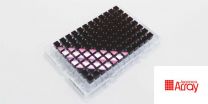Silk bio-ink could help advance tissue engineering with 3-D printers
2015-09-02
(Press-News.org) Advances in 3-D printing have led to new ways to make bone and some other relatively simple body parts that can be implanted in patients. But finding an ideal bio-ink has stalled progress toward printing more complex tissues with versatile functions -- tissues that can be loaded with pharmaceuticals, for example. Now scientists, reporting in the journal ACS Biomaterials Science & Engineering, have developed a silk-based ink that could open up new possibilities toward that goal.
Most inks currently being developed for 3-D printing are made of thermoplastics, silicones, collagen and gelatin or alginate. But there are limits to how these inks can be used. For example, the temperatures, pH changes and crosslinking methods that may be required to toughen some of these materials can damage cells or other biological components that researchers would want to add to the inks. Additives, such as cytokines and antibiotics, are useful for directing stem cell functions and controlling infections, respectively. To address these bio-ink limitations, David L. Kaplan and colleagues turned to silk protein and developed a way to avoid these harsh processing conditions.
The researchers combined silk proteins, which are biocompatible, and glycerol, a non-toxic sugar alcohol commonly found in food and pharmaceutical products. The resulting ink was clear, flexible, stable in water, and didn't require any processing methods, such as high temperatures, that would limit its versatility. The researchers say the novel material could potentially be used in biomedical implants and tissue engineering.
INFORMATION:
The authors acknowledge funding from the National Institutes of Health.
The American Chemical Society is a nonprofit organization chartered by the U.S. Congress. With more than 158,000 members, ACS is the world's largest scientific society and a global leader in providing access to chemistry-related research through its multiple databases, peer-reviewed journals and scientific conferences. Its main offices are in Washington, D.C., and Columbus, Ohio.
To automatically receive news releases from the American Chemical Society, contact newsroom@acs.org.
Follow us: Twitter Facebook
ELSE PRESS RELEASES FROM THIS DATE:
2015-09-02
China's economic downturn plus other factors, including overcapacity and tightening regulations, mean the next two to three years could be challenging for the foreign chemical and pharmaceutical companies located there. To survive in China as it adjusts to a slower pace of growth, businesses will likewise need to adapt, reports Chemical & Engineering News (C&EN), the weekly newsmagazine of the American Chemical Society.
Jean-François Tremblay, a senior correspondent at C&EN, notes that owing to reforms initiated in 1978, China has been a profitable place for chemical ...
2015-09-02
MANHATTAN, Kansas -- A Kansas State University wheat geneticist is part of a breakthrough study that identifies one of the wheat genes that controls response to low temperature exposure, a process called vernalization. Natural variation in vernalization genes defines when the plant begins to flower and is critical for adaptation to different environments.
Researchers anticipate this will help wheat breeders design wheat varieties that can adapt and thrive in changing environments around the world.
Eduard Akhunov, associate professor in the plant pathology department, ...
2015-09-02
In China, smoking now causes nearly a quarter of all cancers in adult males. The finding comes from a large study published early online in CANCER, a peer-reviewed journal of the American Cancer Society, as part of a Special Issue on Lung Cancer in China. High uptake rates of cigarette smoking in teenaged males and continued use in adulthood foreshadow even greater tobacco-related cancer risks for the nation.
Tobacco-related deaths have been declining steadily in most developed countries; however, China now produces and consumes about 40 percent of the world's cigarettes, ...
2015-09-02
School age children who are born prematurely are more likely to have low mathematical achievement, thought to be associated with reduced working memory and number skills, according to a new study published today in the neurology journal Brain.
Researchers assessed up to 224 preterm children at age five and age seven to examine the use of magnetic resonance imaging (MRI) after birth to identify infants at risk of later academic impairment. The study participants are from Melbourne, Australia and are part of a Murdoch Children's Research Institute study. The authors suggest ...
2015-09-02
DURHAM, N.C. -- A new Duke University-led study has revealed the presence of radioactive contaminants in coal ash from all three major U.S. coal-producing basins.
The study found that levels of radioactivity in the ash were up to five times higher than in normal soil, and up to 10 times higher than in the parent coal itself because of the way combustion concentrates radioactivity.
The finding raises concerns about the environmental and human health risks posed by coal ash, which is currently unregulated and is stored in coal-fired power plants' holding ponds and landfills ...
2015-09-02
New York, NY--September 2, 2015--Researchers from Columbia Engineering and Columbia University Medical Center (CUMC) have developed a new method that can target delivery of very small volumes of drugs into the lung. Their approach, in which micro-liters of liquid containing a drug are instilled into the lung, distributed as a thin film in the predetermined region of the lung airway, and absorbed locally, may provide much more effective treatment of lung disease. The work was published in the August 31 online Early Edition of Proceedings of the National Academy of Sciences ...
2015-09-02
Refined by nature over a billion years, photosynthesis has given life to the planet, providing an environment suitable for the smallest, most primitive organism all the way to our own species.
While scientists have been studying and mimicking the natural phenomenon in the laboratory for years, understanding how to replicate the chemical process behind it has largely remained a mystery -- until now.
Recent experiments at the U.S. Department of Energy's Argonne National Laboratory have afforded researchers a greater understanding of how to manipulate photosynthesis, ...
2015-09-02
(Boston)--A new discovery by Boston University School of Medicine (BUSM) researchers may change how kidney disease is treated in the future.
The previously unknown protein transmembrane and immunoglobulin containing 1 (TMIGD1) involved in protecting kidney epithelial cells (cells critical to normal kidney function) from injury, could be a novel target for restoring kidney function from various forms of kidney disease. The findings are published online in the American Journal of Pathology.
Kidneys have several roles, of which filtering blood of waste products to generate ...
2015-09-02
The world might seem a little grayer than usual when we're down in the dumps and we often talk about "feeling blue" -- new research suggests that the associations we make between emotion and color go beyond mere metaphor. The results of two studies indicate that feeling sadness may actually change how we perceive color. Specifically, researchers found that participants who were induced to feel sad were less accurate in identifying colors on the blue-yellow axis than those who were led to feel amused or emotionally neutral.
The research is published in Psychological Science, ...
2015-09-02
A research group, led by Professor Masao Nagasaki and Senior Assistant Professor Yosuke Kawai at Tohoku University Tohoku Medical Megabank Organization, has successfully designed the first ever SNP*1 array that has been optimized for the Japanese population.
SNP, which stands for Single Nucleotide Polymorphism, is a DNA sequence variation that occurs commonly within a population.
This new array, called the "Japonica Array," covers the whole-genome region from which the SNPs possessed by Japanese people can be obtained with a high degree of accuracy.
The design of ...
LAST 30 PRESS RELEASES:
[Press-News.org] Silk bio-ink could help advance tissue engineering with 3-D printers



